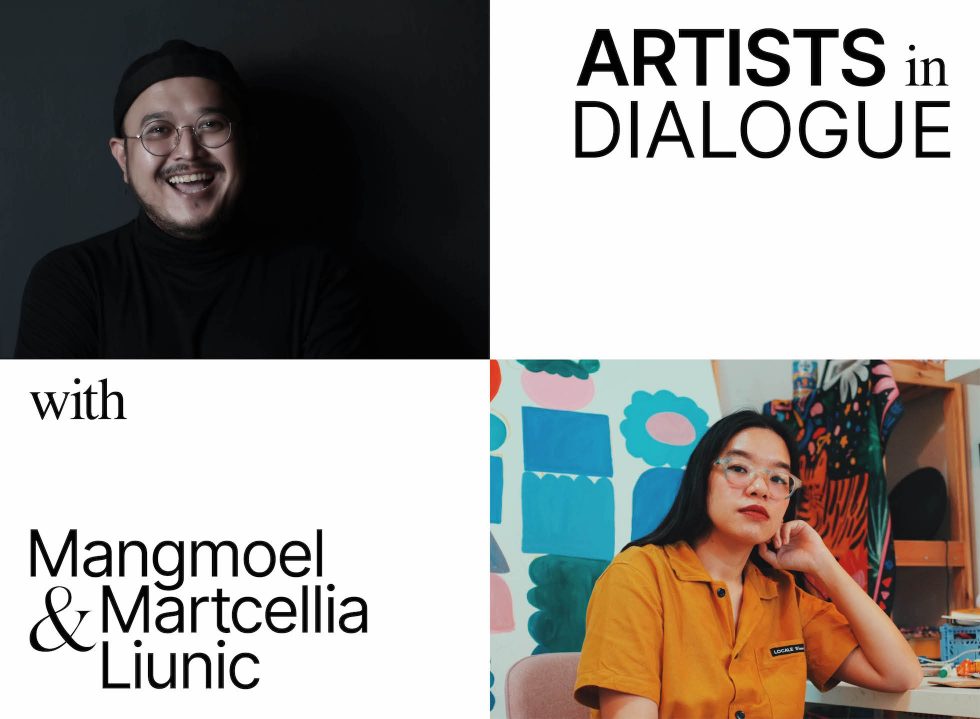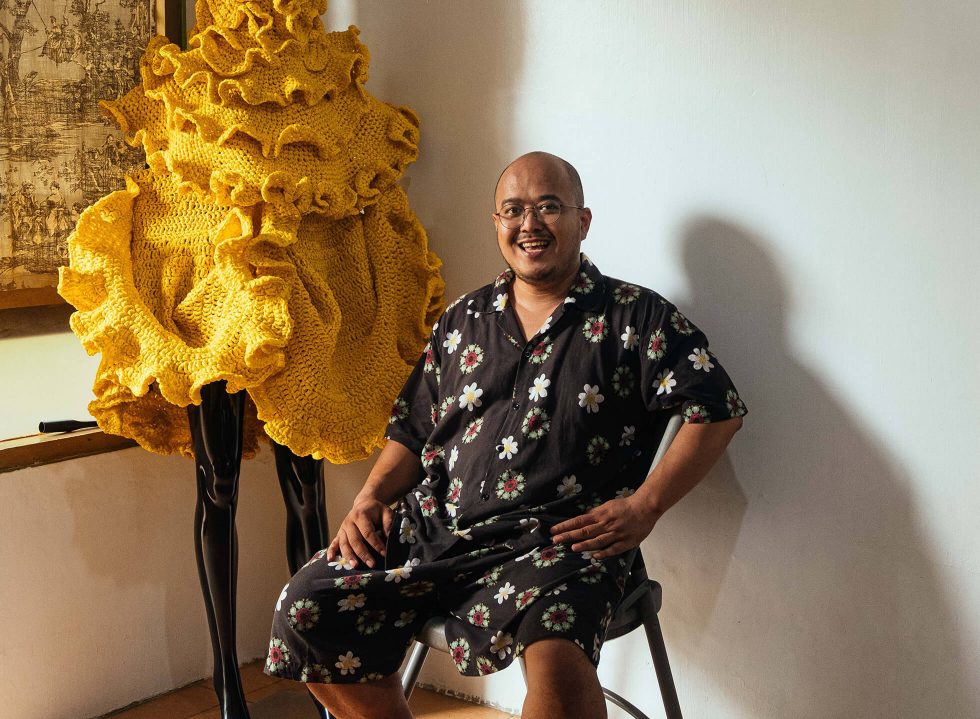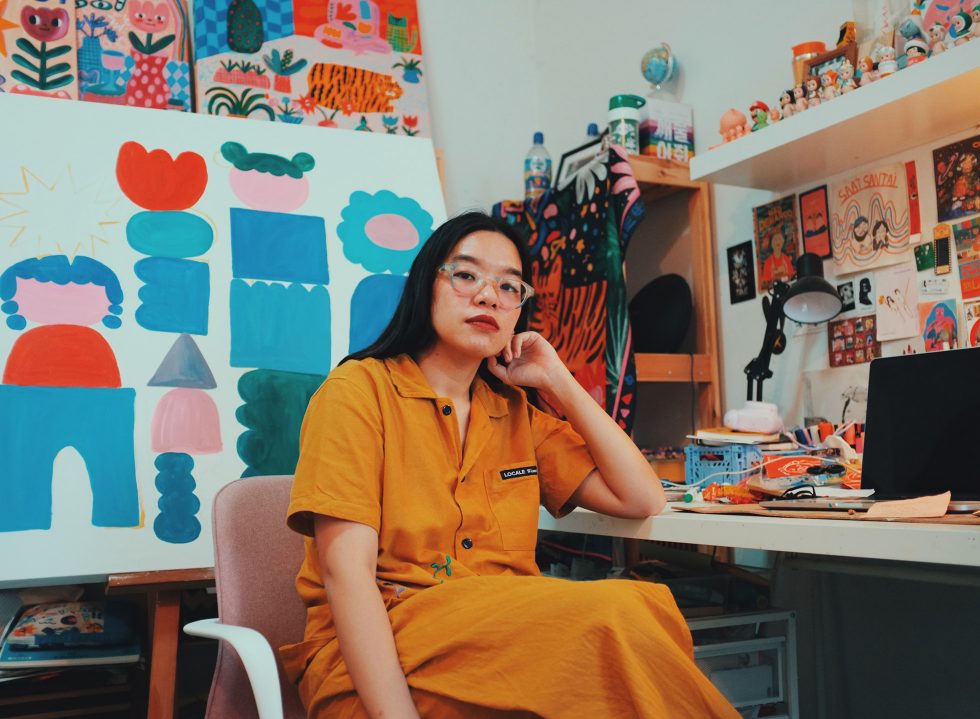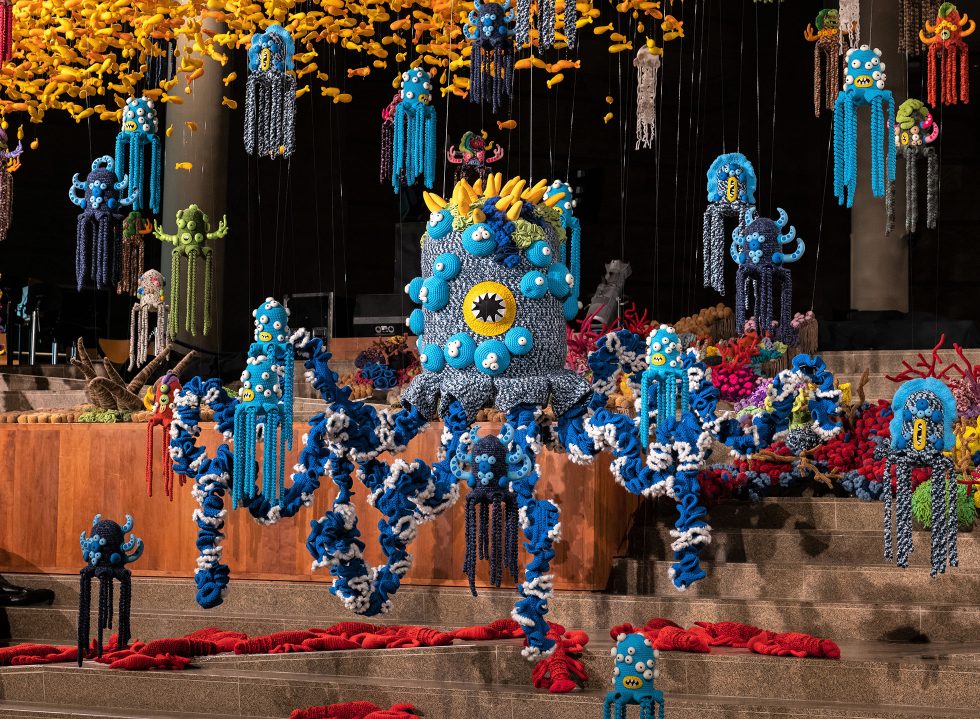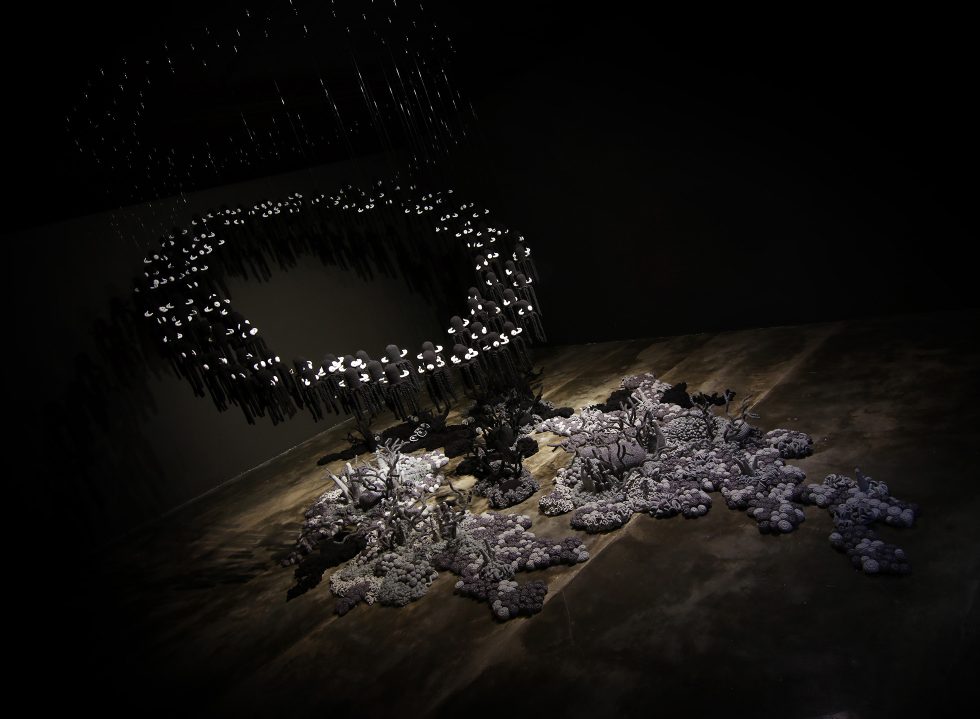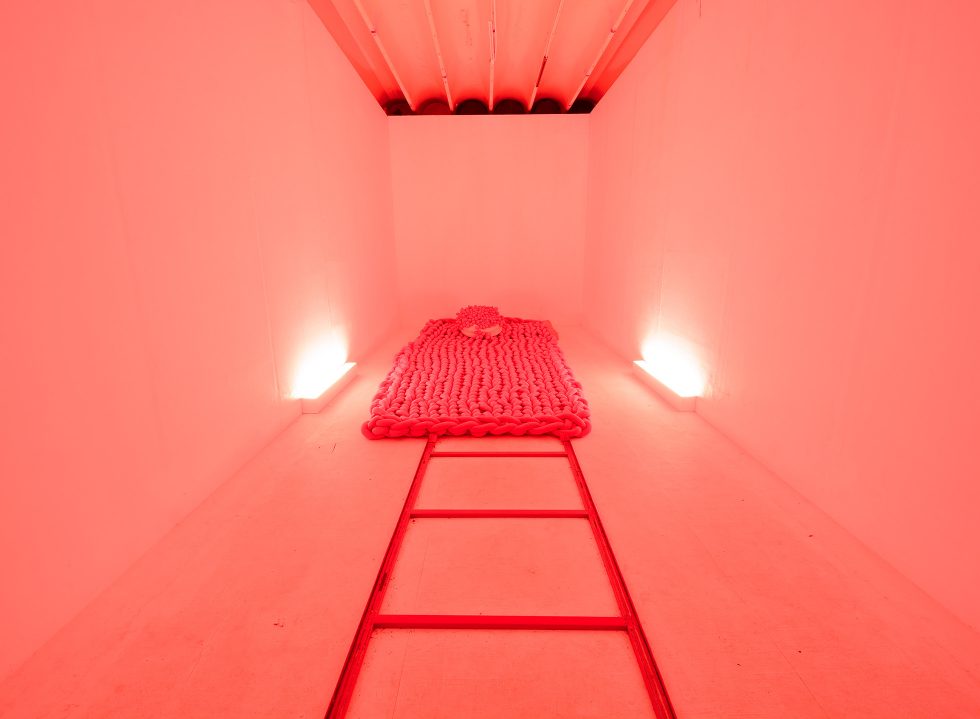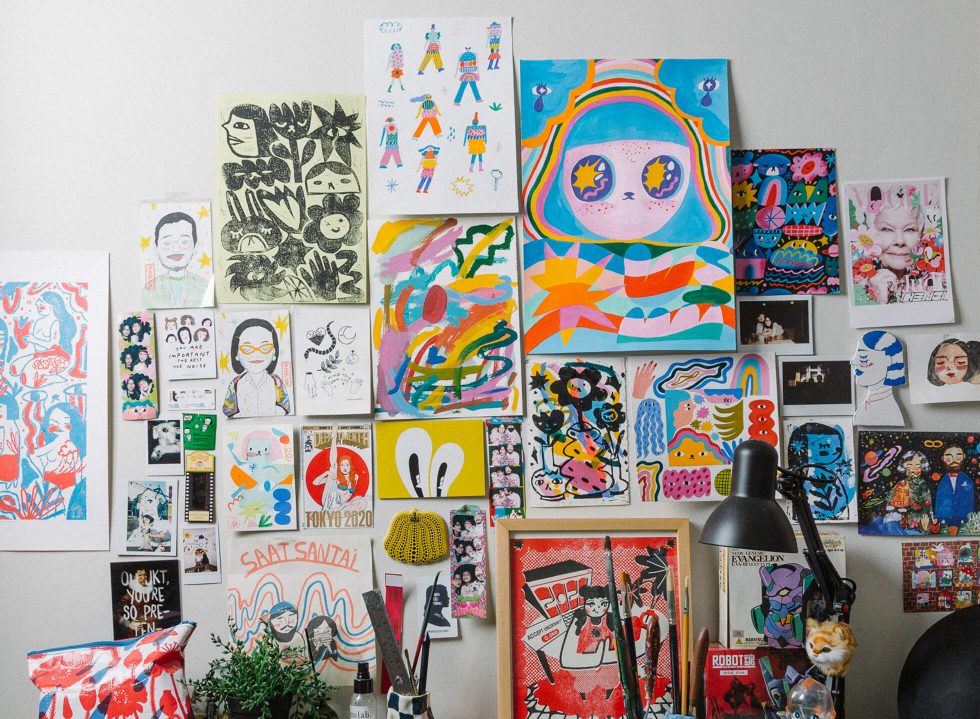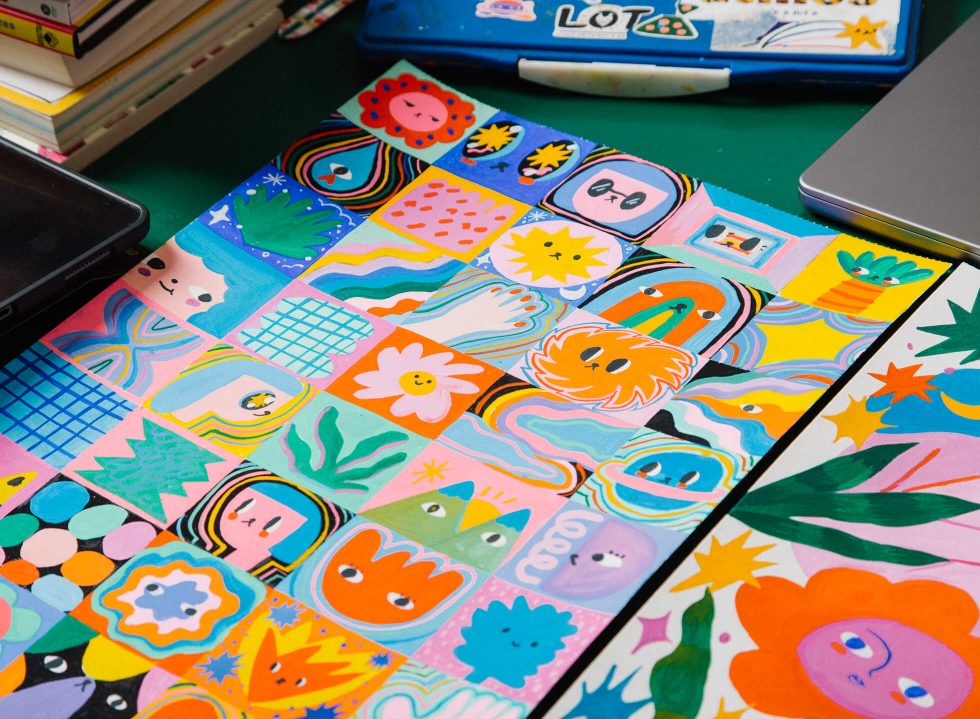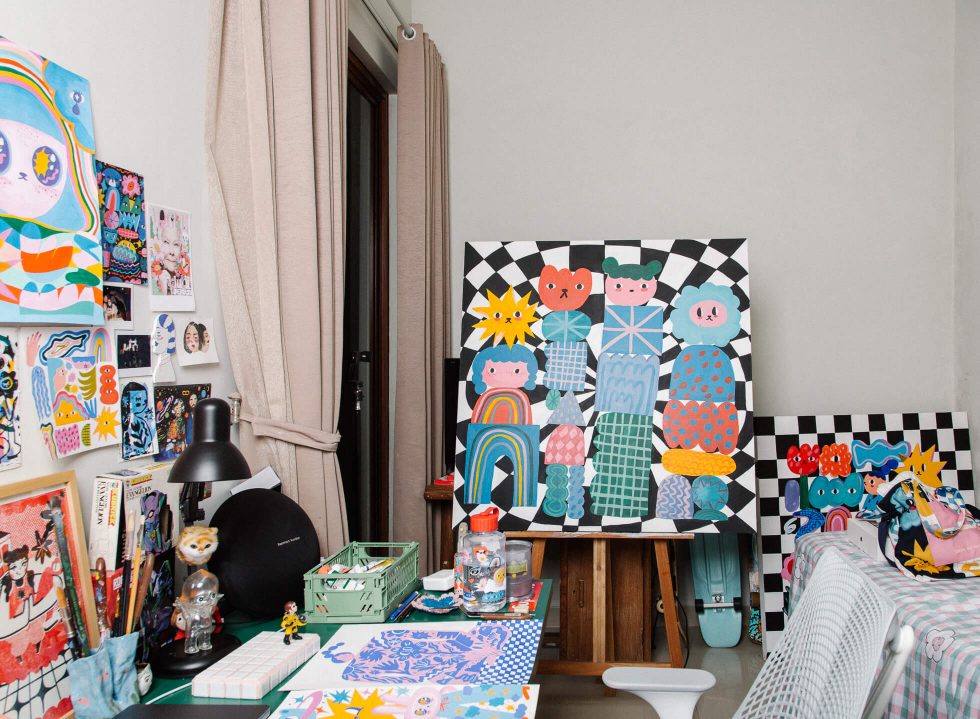Artists in Dialogue is a series of articles where we bring together two creatives from different backgrounds to share what it’s like to navigate the creative industry and exchange insights on their practices.
Whether through crocheted sea-scape installations or printed illustrations on tees and stationery items, Mangmoel and Martcellia Liunic know how to bring their characters to life. Charged with playful colours and textures, both the artists’ works are marked with elements of imaginative creatures and landscapes.
Meeting for the very first time through Zoom, the two artists share what it means to separate their creative identities from their outputs, what fuel their practices, and their shared value of connection and collaboration in an industry that can easily be self-oriented.
Mangmoel (M): Hi Martcellia, nice to meet you. So, what should I call you?
Martcellia Liunic (ML): Hi Mangmoel! I think Cela is fine, Martcellia seems so formal. I’m not too sure what to ask first (laughs). Maybe let’s start with, where are you based?
M: Hello Cela, I’m based in Jogja, near Alun Alun Kidul.
ML: I saw you went to Korea during the pandemic, the project with the bento boxes that you turned into sea monsters on your Instagram Story. That was cute. But I think we have quite different mediums, I’m in design and you are more in the realms of fine art. So, where did you go to university?
M: I grew up in Bandung and moved to Jogja after university. I went to Universitas Pendidikan Indonesia (UPI) to take a degree in Fine Art Education. So I was learning to be a teacher and I have a certificate to teach fine art!
ML: A teacher? That sounds so challenging!
M: Yeah, kids these days are on another level. I felt like I was bullied when I was younger and bullied again as an adult (laughs). So in the end I thought let me just be an artist!
ML: (laughs) I can imagine. Are you teaching now?
M: I teach workshops now because I feel like people who join are those who really want to learn and have an interest. It’s a lot easier to teach someone who you know is interested in the subject.
ML: Yeah, that’s true. So how did you start working with crochets? I remembered seeing one of your installations in ARTJOG and it stuck with me. It was really cool.
M: Ah, from ARTJOG in 2018. Actually, ‘mogus’ or ‘monster gurita’ was part of my final project at university. I originally wanted to focus on origami, but then I found it was too easily breakable. It’s paper, so it felt like such a waste for me to spend hours creating something that is so easily broken, whereas with crocheting they can be very strong yet pliable. There’s so much you can explore with it. I also love that I can do it anywhere, I take my needles out with me everywhere.
ML: Wow, origami. I think the only thing I can fold is probably a bird (laughs). That’s cool! I want to know, are crocheting and knitting different?
M: Yeah, it’s very different actually. With knitting, it’s somewhat lighter and looser, like when you make a scarf or a sweater, you use two needles and you weave the yarns together to make a form, but with crocheting, you only use one. For me, I usually make modular forms which can be joined into another piece, so the pieces I work on can vary in size, sometimes very small and sometimes they’re quite big. But what about you, how did you start illustrating?
ML: I actually studied graphic design in college. I went to Lasalle in Jakarta but I didn’t finish my degree. It was quite expensive and I just thought I knew enough and knew what I wanted to do.
M: Ahh okay. My first exhibition was around that time, but I think the turning point of my career was definitely ARTJOG. It opened a lot of doors and opportunities for me to exhibit internationally and to work with different galleries. I still remember the piece I did for ARTJOG, people were trying to find out who did it, at first they thought I was a girl (laughs).
ML: (laughs) Your installations are massive! So can people buy your work? It’ll be cool to have it in the house hanging from the ceiling.
M: Yeah, some people do. Sometimes they buy a small piece, like say, one of the coral-shaped islands. But I’ve had people buying a whole installation to hang from the ceiling before (laughs). Most of the time, people buy some of the doll-sized octopus monsters.
ML: I want one! I actually have a wish list of merchandise or items I’d love to collect from local artists, so I’ll add that to my list. But I don’t know, I love collecting artworks from other people. On a recent trip to Japan, I bought a skateboard illustrated by Yoshimoto Nara.
M: Ah, I love Nara. There was a pop-up exhibition he was doing in Korea a while back and that was really cool. But I’m actually curious, you were working with H&M and your brand Liunic on Things, what was that like? I guess what I want to know is how do you cater the prints differently when working on merchandise or a product item compared to when you just illustrate or draw?
ML: I think you do have to be strategic about planning where the prints will go, the size of the prints, and what they will look like on certain items. Because in terms of merchandise or clothing, I guess people will enjoy it differently compared to an artwork on the wall. But with H&M, they’re the ones who decided where the prints would go actually.
M: That’s interesting. Because I find it hard to work on merchandise, in terms of the concept or even the pricing. I haven’t been able to quite figure it out.
ML: I love artists’ merchandise, I think every artist should have one! Artworks can be very expensive but as someone who appreciates art, the merchandise is sort of an affordable entryway into their world. It’s like how museums always have gift shops because only a few people can buy the actual piece.
M: Yeah, that makes sense. It is nice to have something of an artist you admire, even if it’s something small. Okay, next question, what inspires you to draw?
ML: I usually draw when I’m sad or there’s a lot on my mind, it’s kind of my way of cheering myself up. But I’m learning to draw in all emotions and to do it when I’m happy as well. It’s not natural, but I’m practising.
M: I do that too sometimes! I think as a creative, we use our emotions and thoughts a lot when creating right, and some emotions spur the desire to create more than others. I guess it’s different for people. When I’m happy, I gravitate towards crocheting, but when I feel a bit down I return to drawing. I used to draw a lot growing up, it feels very free to pour out your emotions onto a piece of paper.
ML: I agree! I draw because I genuinely love to draw. If this wasn’t my job and if nobody bought my work, I can confidently say I would still be drawing. It’s a personal practice to me. Of course, I’m grateful that I’ve been able to make a living out of something I love, too. That’s a privilege.
M: Me too, art for me is really ‘healing’, as cliché as that sounds. So even if no one gets it or sees the value of it, I definitely think that I will still knit and crochet and draw. It’s just a way for me to understand and express myself.
ML: You know, I think I have a pretty big imposter syndrome, where I feel like I question my work and doubt if I am actually deserving of what I’m doing. It’s not rare for me to look at my work and ask “is this really good enough?”. Is that something you can relate to?
M: Yeah for sure, I feel like all creatives go through that at some point. I think it’s quite inevitable, because what we create is an extension of us in a way, so of course, it means a lot to us, but I think we just have to keep going. With more experience and maturity, we get to grow our work and be more confident in it. But the waves come and go…What do you do for fun?
ML: (laughs) When people ask me this, I almost feel guilty to answer because I feel like I have no other hobby than drawing. I draw all the time. What about you?
M: Before the pandemic, I used to travel more for residencies and exhibitions, I enjoyed that a lot!
ML: What is a residency like? Do you get briefed on what you need to create beforehand or is it quite flexible and you get to explore and experiment all you want?
M: Mmm, I think it varies. But why I enjoy them so much is you get to really learn from other artists there, from the way they work, the way they design and execute things. It’s really about that, sharing what we know and seeing how we can add to each other’s creative process too. It’s a lot of fun.
ML: Ah, that sounds interesting. I’d love to try someday but I don’t think I can leave my dog. They won’t allow me to take my dog, right?
M: It depends, but maybe! (laughs) But I feel like when it comes to art and the process, people I’ve met internationally seem to value the time and process more.
ML: Like people value art more in general, you mean?
M: Yeah, I mean, most of my collectors are from abroad, and most of my exhibitions are out of the country actually. This is definitely something I hope more people here would get to appreciate more. But anyway, what is it like in Jakarta? Do artists have their own groups for illustrators, painters, and visual artists?
ML: I guess to an extent, yeah we do, but I don’t really hang out with one group of people. I try to be friends with everyone. Mmm, do you have any thoughts on NFT?
M: I think a lot of people have recommended me to jump on that and try it out but I actually haven’t! Not to say I’m not interested though. I’m still not quite sure how to translate my work within that platform, but I think it’s cool how much more opportunities are out there for people to create and sell their art.
ML: Yeah I think it’s a choice, right? I don’t think all artists need to do NFT, but if it works for some then I think it’s great! One thing I enjoy about it is how it makes collecting art seem less daunting. Before NFT, it feels like only very wealthy people can collect art. But now through the platform, I can also have a small collection of work from artists whose work I enjoy, I think that’s the plus. So, you work with really big installations, do you have a lot of people helping you?
M: Yeah, definitely. I’m at my house now and there are people here working on a few pieces for an upcoming exhibition. This is only a portion of those helping me, there’s also the ‘konco mogus’ who are also based in Jogja. I even asked my knitting teacher from Bandung to come and help sometimes (laughs). I would never be able to do this without them. What about you? How big is your team?
ML: Yeah, I work in a team of 10. Jakarta traffic is really bad so we don’t actually go to the office every day. We go twice a week and do our own thing in between.
M: What are you guys working on at the moment?
ML: Ah sorry, I can’t actually say because of my contract, but when it comes out I’ll show you! What about you?
M: Not too long ago, I was in Jakarta to set up for an exhibition in Sarinah. At the moment, we’re also preparing for this year’s ARTJOG. You should come!
